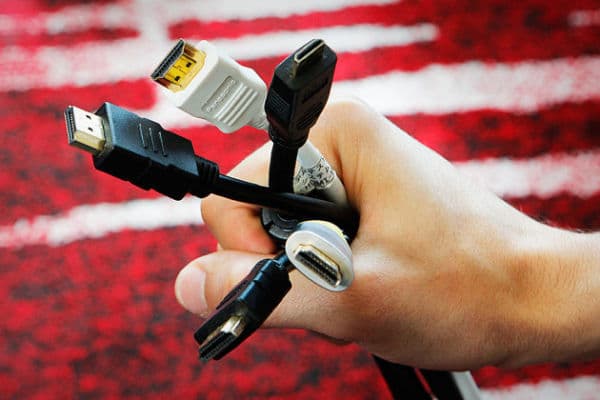How to navigate the jungle of HDMI cables? Video game consoles, televisions, computers, Blu-ray players, all devices have a common feature- they usually come with one or more HDMI cables for transmitting sound and images.
Since its arrival in 2002, the HDMI standard has undergone many updates due to the arrival of new elements such as 3D, 4K video and higher display frequencies. The features have evolved with version 2.1 that accepts 8K and even 10K videos.
HDMI cables differ with their bit rates
Now there is a wide selection of cables on the market, and it becomes difficult to navigate to buy the one that meets your needs. Like Ethernet or USB cables, HDMI cables offer the maximum overall throughput that will be used to transmit sounds, images, and other digital data.
For the image, the required bitrate will depend on the definition and display frequency, but also on the chrominance subsampling (4- 2- 0, 4- 2- 2 or 4- 4- 4), color depth (8 or 10 bit or even 12 bit or 16 bit per base color) and presence of HDR metadata. It is therefore important to ensure that you have a cable that offers sufficient speed and, above all, to be wary of misleading advertising. A manufacturer can announce that its cable is compatible with the HDMI 2.0 standard, but this is not guaranteed. And above all, there are no official certification of the different versions of the HDMI standard.
Pay attention to cables advertised with specific functions such as ARC (audio return channel) or CEC (global control of all HDMI devices with a single remote control) since these functions depend mainly on the device. For example, some TVs have multiple HDMI sockets, but sometimes only one supports the ARC function for connecting to an audio amplifier.
The only exception is the possible Ethernet channel (HEC) for transferring network data between two devices. For example, if a TV and a Blu-ray player have the HEC function, just connect one to your door so that the other also accesses the Internet. This function must be mentioned in the cable characteristics.
Which HDMI cable to choose?
The organization that manages the HDMI certifications has decided to take the situation in hand and tries to encourage users to ignore the standard versions (1.4, 2.0, etc.). It also offers certification of HDMI cables to a limited number of categories. For example, the “Standard” HDMI cable is limited to 720p and 1080i video transmission, while the “High Speed” HDMI cable supports 1080p, 3D, Ultra HD 4K (up to 30fps), HDR and video.
Finally, the “Premium” certification guarantees that the cable will be able to transmit Ultra HD 4K video at 60 frames/s (HFR) and benefit from the BT.2020 color space, as well as HDR with dynamic data. This type of cable is interesting for example with the latest game consoles (PS4 Pro, Xbox One X), which have 4K games with a 60 frame / s display.
The organization also provides an HDMI “Ultra High Speed” logo for cables capable of transferring 8K HDR video. There are also variants “With Ethernet” of cables which, as the name suggests, mention the presence of a specific channel for an Ethernet network connection. The “Automotive” versions indicate that the cables have a specific connector for cars.
Opt for a certified HDMI cable
- When purchasing an HDMI cable, you must first check the connector (Standard, Mini or Micro), as well as the need for an integrated Ethernet network connection or not. Attention to models that are too cheap, for example, 5 euros, because they are generally of poor quality.
- For older game consoles and Blu-ray players, any recent HDMI cable is suitable as long as it is of good quality.
- To watch most movies in Ultra HD 4K (at 24 or 30 images/s), a “High Speed” cable is usually fine.
- For the latest game consoles, PC players and Apple TV 4K, opt for a certified “Premium” cable because there are models of 2-3 m around 20 euros and you can be sure that they will offer the features required by a 60-frame 4K display per second.
If you buy online, we recommend that you look at customer comments because some models, even certified ones, sometimes suffer from very restrictive defects, such as connectors that are very difficult to remove once connected. Pay attention also to the length because cables over 5 m sometimes have difficulty in correctly transmitting the electrical signal.
Finally, we must also check the HDMI specifications of the devices we will be connecting. For example, there may be several HDMI connectors on a device that correspond to different versions of the standard. The connection will always be made with the weaker version (backward compatibility). It is not the fault of the cable if you connect the new 4K video game console (HDMI 2.0) to the HDMI 1.4 port of the TV.

